Cruise Day 51
Speed 12 knots (kts)
Course 200° (SSW)
Location Canada Basin, ~340 nm north of Barrow, Alaska
Depth 3879 m
GO DEEPER DISCUSSION: (see previous journal for the questions.)
Answer to Sunday’s riddle: A rope
TODAY’S JOURNAL:
As you might infer from our speed, we are heading south again in completely open water. There aren’t any more bits of ice to be seen, and the ocean’s surface is free of the ice crystals that lent an oily effect to the swell yesterday. The air pressure is steadily dropping, with a corresponding strengthening in wind as the day wears on. The storm is now forecast to hit tomorrow – what that means for the planned super station remains to be seen. Today we are doing hit-and-run marginal ice zone stations, with one in the bag from this morning and another coming up in an hour or two. There’s a lot of happy anticipation of Karaoke tonight – I won’t be grabbing the mic but hope to see some of the vocal talent.
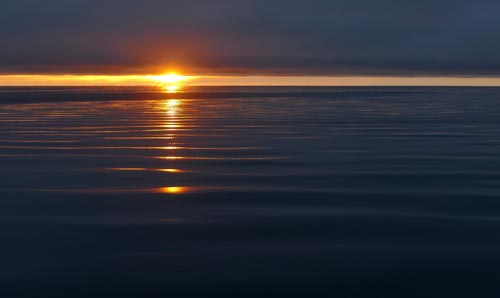 Last night’s sunset peeked below the cloud ceiling, with highlights repeated in the smooth swell.
Last night’s sunset peeked below the cloud ceiling, with highlights repeated in the smooth swell.
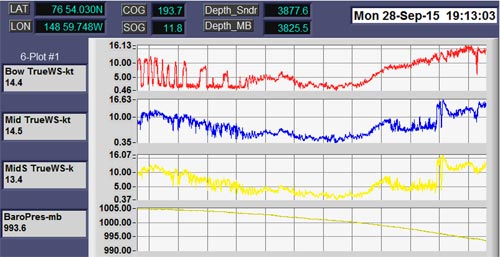 The atmospheric pressure has been dropping for the last 24 hours (bottom trace in this screen shot), and should drop more as a forecasted strong storm approaches.
The atmospheric pressure has been dropping for the last 24 hours (bottom trace in this screen shot), and should drop more as a forecasted strong storm approaches.
Yesterday I posted some photos for you faithful readers to contemplate.
To review, readers could try to figure out: 1) What are these objects for? 2) What are these objects called? (Fine to research online etc.) 3) What is the connection between these objects (more detailed than “they are all on a ship”, etc.)
Here are the answers – how did you do?
Sunday Sleuthing Photo 1: This item allows passage of a line off the deck without chafing or damaging railings etc. It is called a CHOCK.
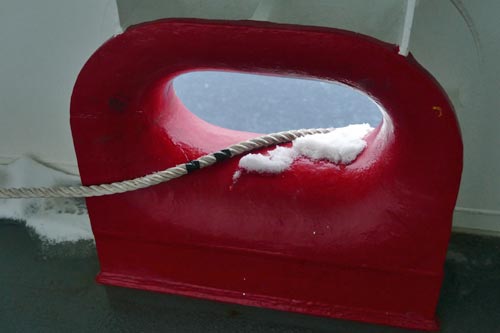 A chock with a line running through it on USCGC Healy.
A chock with a line running through it on USCGC Healy.
Sunday Sleuthing Photo 2: These stout pillars are used to secure lines to the deck by wrapping them in a figure-8 (or for smaller lines, just wrapping them around one pillar.) On docks, similar items are called bollards, and on a ship they are known as BITS.
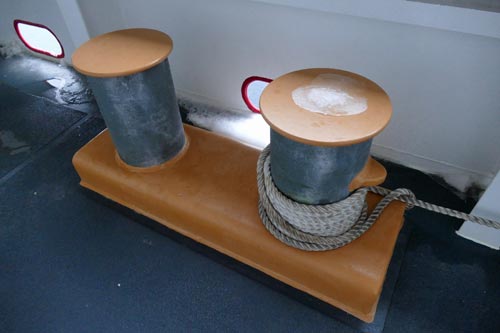 Bits with a small line wrapped around one on USCGC Healy.
Bits with a small line wrapped around one on USCGC Healy.
Sunday Sleuthing Photo 3: This item is used to pull line onto the deck. It works by turning under power when several loops of line are wrapped around it. Line doesn’t coil up on it, though as the line is pulled onto the top of the wraps it is also allowed to come off on the bottom. It is called a CAPSTAN.
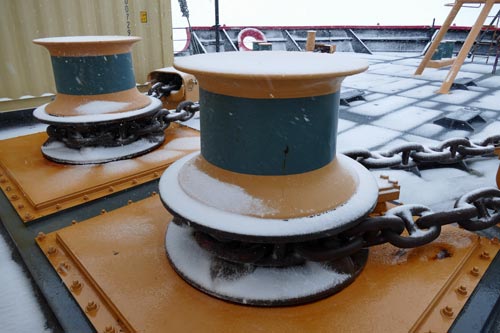 The Healy has two anchor capstans that pull up the heavy anchor chains. Line can also be wrapped around the upper parts of these capstans for heavy hauling.
The Healy has two anchor capstans that pull up the heavy anchor chains. Line can also be wrapped around the upper parts of these capstans for heavy hauling.
Sunday Sleuthing Photo 4: This device also secures lines to the deck, but is generally for smaller lines than the bits are used for. It is a CLEAT.
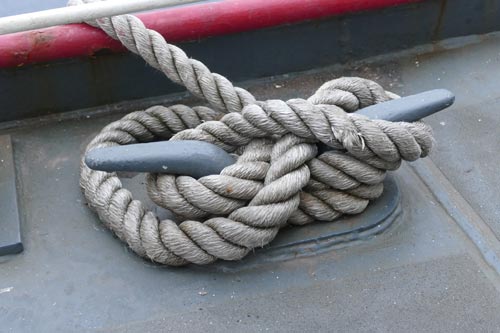 Here a cleat secures a line on the deck of USCGC Healy.
Here a cleat secures a line on the deck of USCGC Healy.
Sunday Sleuthing Photo 5: Many of you probably recognized this one. This has a grooved wheel inside for line to run over, changing the direction of pull. Several of them can also be used in combinations to increase the mechanical advantage of the pull. On shore, these are called pulleys, but on a ship this is a BLOCK.
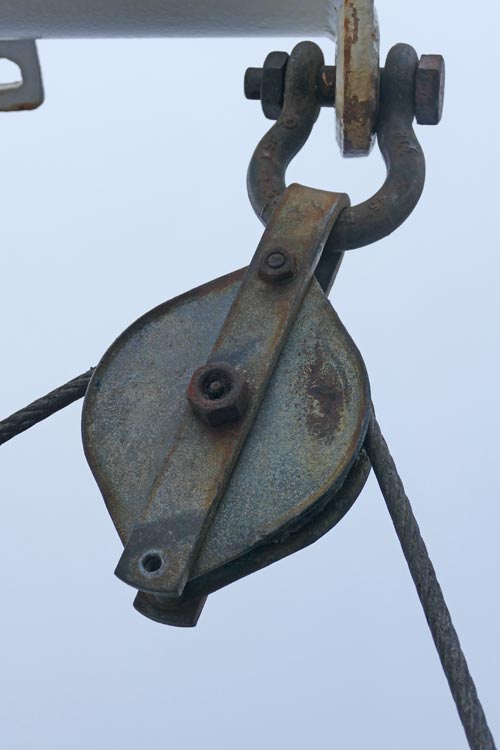 A block with a line running through it on USCGC Healy.
A block with a line running through it on USCGC Healy.
Sunday Sleuthing Photo 6: We end with this item, which is used to store bulk line. It is a SPOOL.
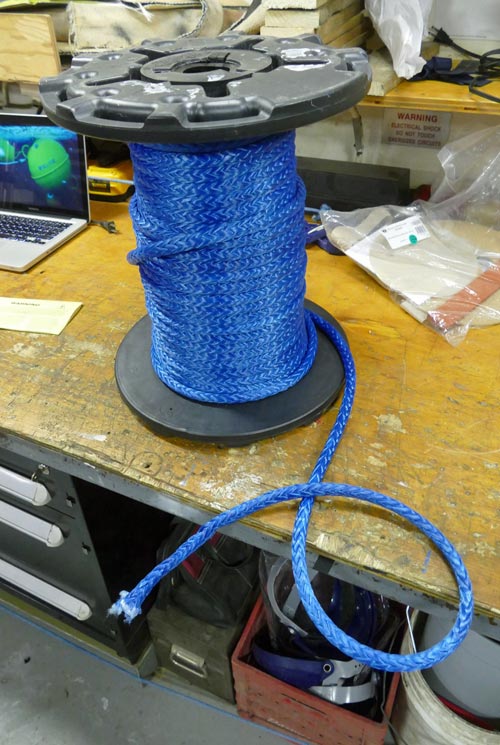 Here’s a spool holding the line I used for my splicing lesson. I found out that this 1/2-inch blue Amsteel line has a working strength of 34,000 pounds – strong stuff!
Here’s a spool holding the line I used for my splicing lesson. I found out that this 1/2-inch blue Amsteel line has a working strength of 34,000 pounds – strong stuff!
Finally, as you have undoubtedly figured out by now, the connection is that these items are used to manage lines on a ship. By tradition, ropes on a ship are referred to as lines. The first time I went aboard the Healy someone told me, “There’s no rope on a boat” to remind me of the preferred terminology.
GO DEEPER!
Why can dropping barometric pressure indicate stormy weather is on the way?
Aloft Con web cam updated every hour
Healy Track
That's all for now. Best- Bill

